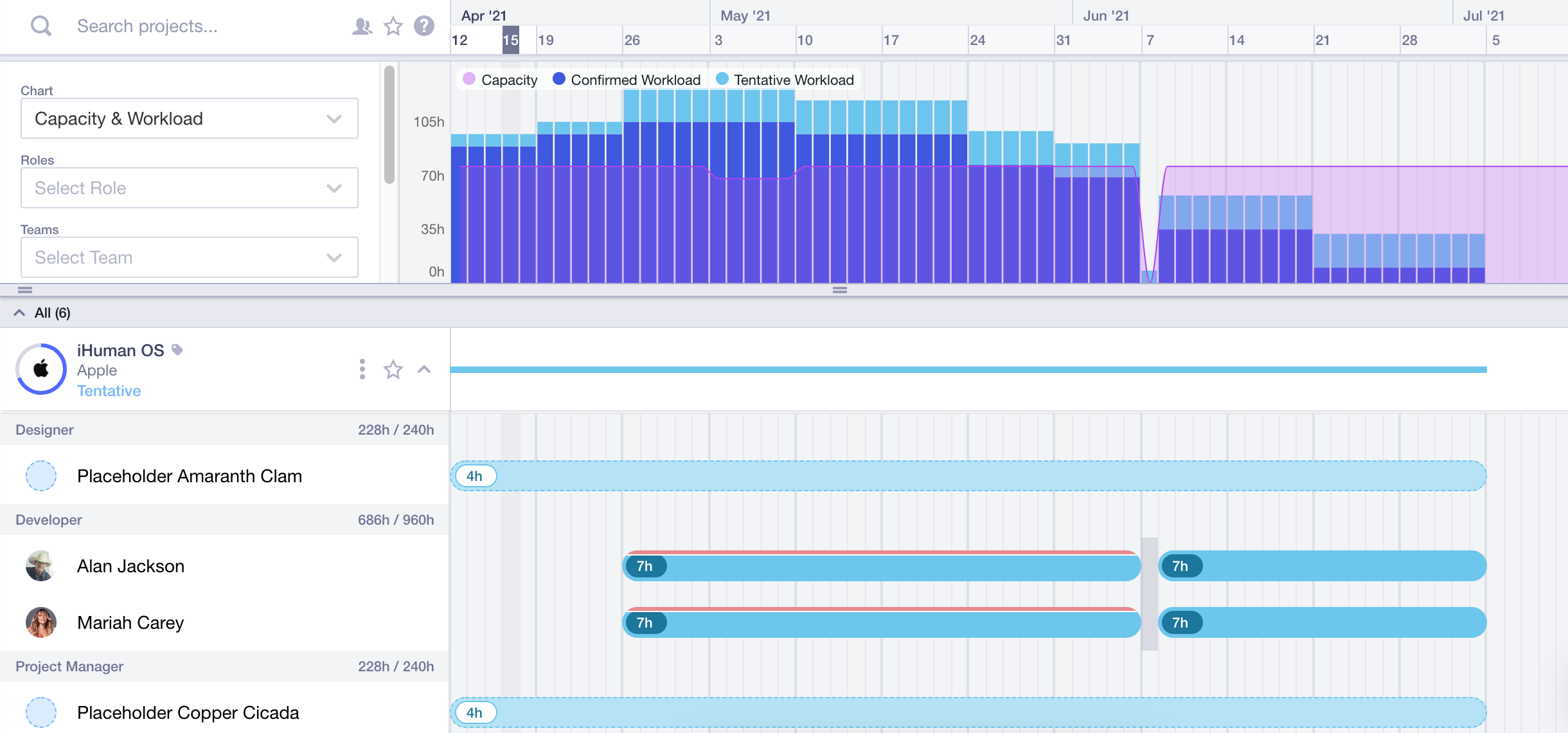Did you know that you can use placeholders in Runn? Learn why placeholders are useful in resource management and how to use them effectively.

We’re excited to be introducing a new blog series in which we highlight some of the coolest features in Runn that you may not know about. If you’re currently using Runn but want to become a power user then you’ll love some of the features we’ll be mentioning in due course.
One of the first steps in planning out your project is determining what roles - and how many people of each - you’ll require to deliver the project. After allocating the people you know will be available, you might be left with some shortages where there’s either no availability with someone of the right role or skill, or you simply haven’t decided yet who on the team you'll want to take the work.
In that case, you can create placeholders in the Project Planner to indicate demand for a person of a specific role and continue building your project schedule.
You’ll be able to give each placeholder a name (or just stick with the one we automatically generate 😃) and assign them a role and team. Once you have an idea of who you want to assign the placeholder work to, simply transfer the placeholder assignments to the person you’ve chosen.

If the only thing stopping you from planning a project is not being sure if you have the right people, you can still create and allocate your project budget based on roles.
Runn treats the placeholder like any person with that role - they have a default hourly cost to business and a charge-out rate taken from the rate card for each project.

Placeholders are particularly useful when you are planning out tentative projects that are still at proposal stage and you want to get a quick idea of the expected costs, revenue and possible profit margins for a project.
They will also help you get a forecast of how winning new work would affect your future resourcing and company bottom-line.

Using placeholders will help you to see which roles are the most in-demand. A bird’s eye view of your team’s and placeholders’ workload pinpoints the gaps and helps you to answer questions like how many people you should bring in or re-allocate, when, and for how long.
You may find that bringing someone in would be the best way of managing your allocations. Whether you decide to hire someone permanently or get a contractor, the People Planner lets you visualise future needs and kickstart the hiring process ahead of time.

To try out this feature, log in to your Runn account or sign up for a free 2-week trial from our website.
We have a useful step-by-step guide in our help center to get you started.